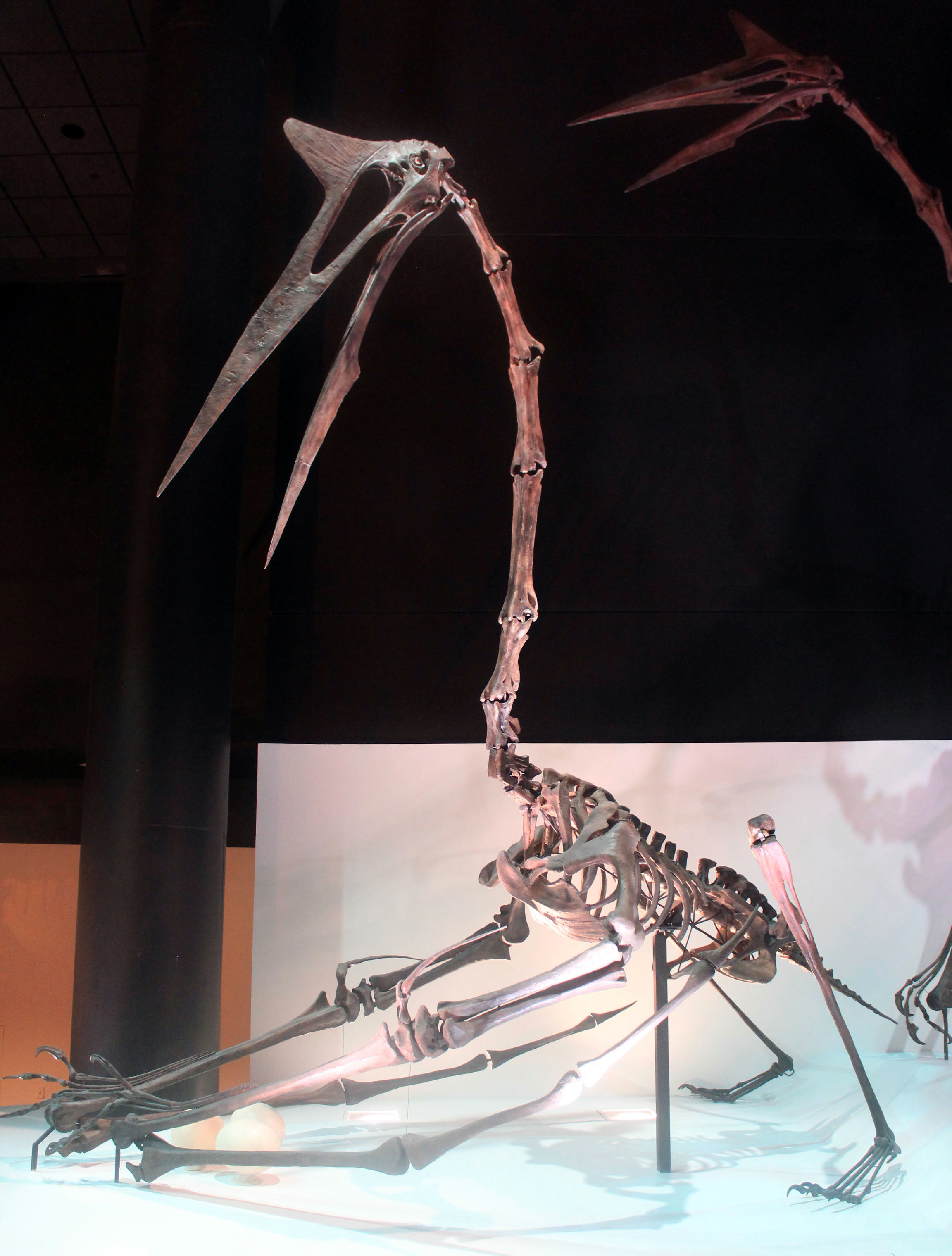Paleontologists have found that the thin neck vertebrae of the azhdarchid pterosaurs got their strength from an intricate internal structure.
An artist’s impression of the azhdarchids pterosaur Alanqa saharica. Image credit: Davide Bonadonna.
Pterosaurs — flying reptiles of the Mesozoic era – made their first appearance in the fossil record in the Late Triassic and survived until the end of the Cretaceous approximately 66 million years ago.
Although some pterosaurs were small, with wingspans of less than 1 m, members of the enigmatic pterosaur family Azhdarchidae achieved wingspans of up to 10 m, possibly even as high as 12 m.
The azhdarchids are notable for elongation of the neck as a result of hyper-elongation of their cervical vertebrae.
“These animals had ridiculously long necks,” said Cariad Williams, a Ph.D. candidate at the University of Illinois at Urbana-Champaign.
“In some species, the fifth vertebra of the neck from the head end is as long as the animal’s body. It makes a giraffe look perfectly normal.”
“We wanted to know a bit about how this incredibly long neck functioned, as it seems to have very little mobility between each vertebra.”
Williams and colleagues investigated the internal micro-architecture of a well-preserved cervical vertebra from the Cretaceous azhdarchid pterosaur Alanqa sp. found in the Kem Kem Group of Morocco.
“One of our most important findings is the arrangement of cross-struts within the vertebral centrum,” said Dr. Dave Martill, a paleontologist at the University of Portsmouth.
“It is unlike anything seen previously in a vertebra of any animal.”
“The neural tube is placed centrally within the vertebra and is connected to the external wall via a number of thin rod-like trabeculae, radially arranged like the spokes of a bicycle wheel and helically arranged along the length of the vertebra. They even cross over like the spokes of a bicycle wheel.”
“Evolution shaped these creatures into awesome, breathtakingly efficient flyers.”
The vertebra of Alanqa sp. shows the bicycle wheel-like spoke arrangement. Image credit: Williams et al., doi: 10.1016/j.isci.2021.102338.
The team’s analysis suggests that as few as 50 of the spoke-like trabeculae increased the amount of weight azhdarchid necks could carry without buckling by 90%.
Together with the basic tube-within-a-tube structure, it explains how the relatively light-weight animals could capture and carry heavy prey items without breaking their necks.
“It appears that this structure of extremely thin cervical vertebrae and added helically arranged cross-struts resolved many concerns about the biomechanics of how these creatures were able to support massive heads — longer than 1.5 m — on necks longer than that of the modern-day giraffe, all whilst retaining the ability of powered flight,” Dr. Martill said.
“While pterosaurs are sometimes thought of as evolutionary dead ends, the new findings reveal them as fantastically complex and sophisticated. Their bones and skeletons were marvels of biology — extremely light yet strong and durable,” the paleontologists said.
“There’s still much to learn in future work about pterosaurs, including seemingly basic questions about their flight abilities and feeding ecology.”
Source: sci.news









